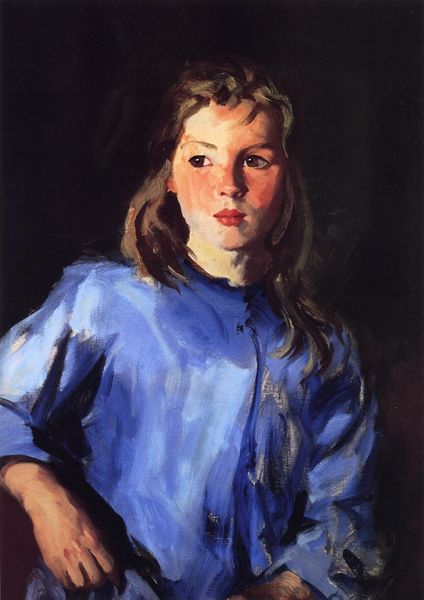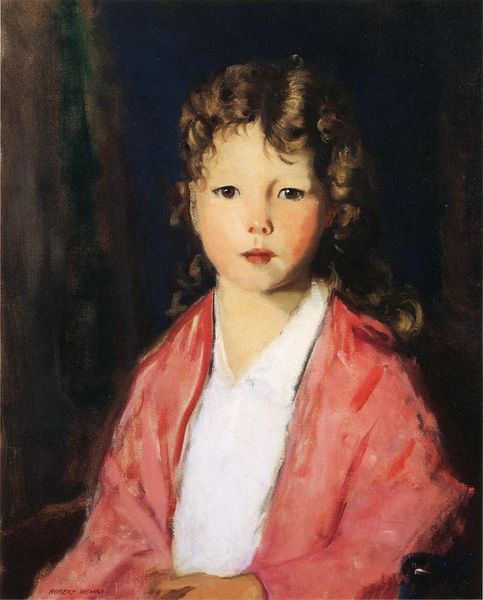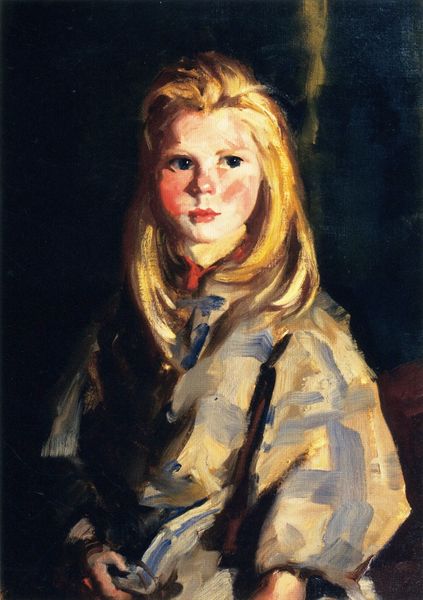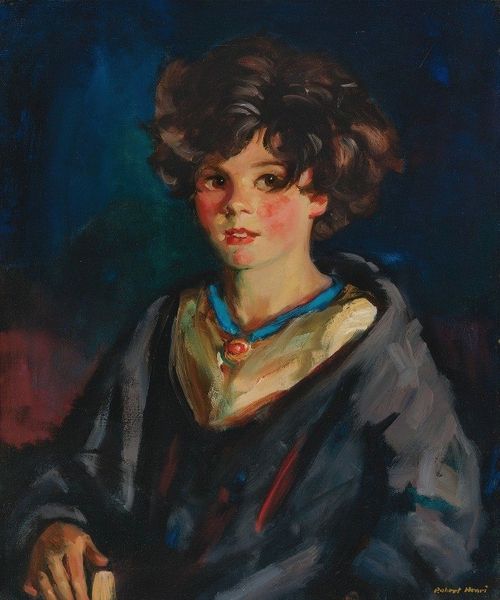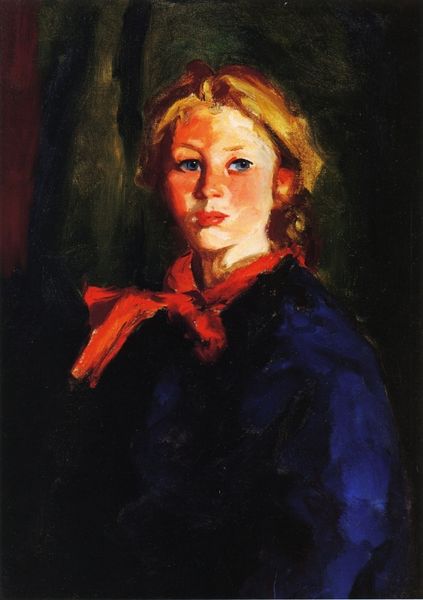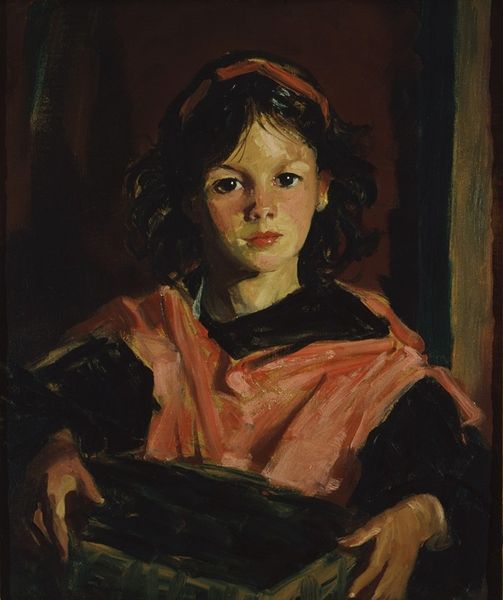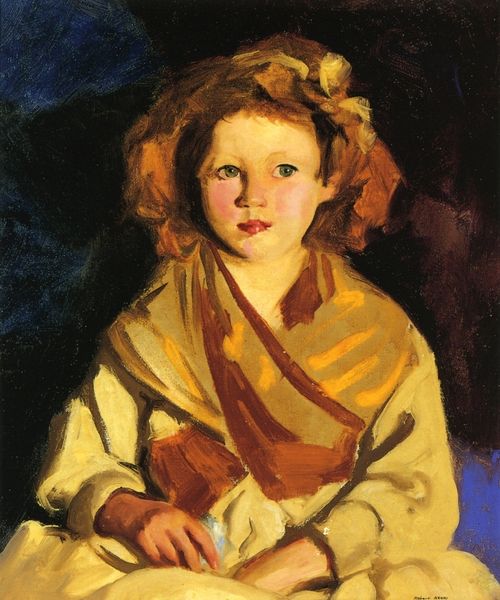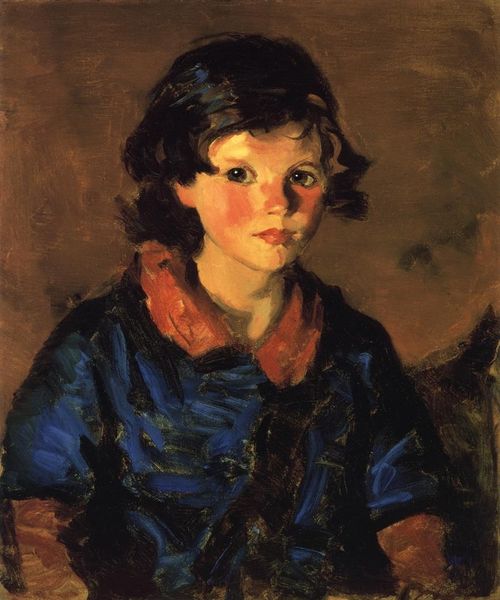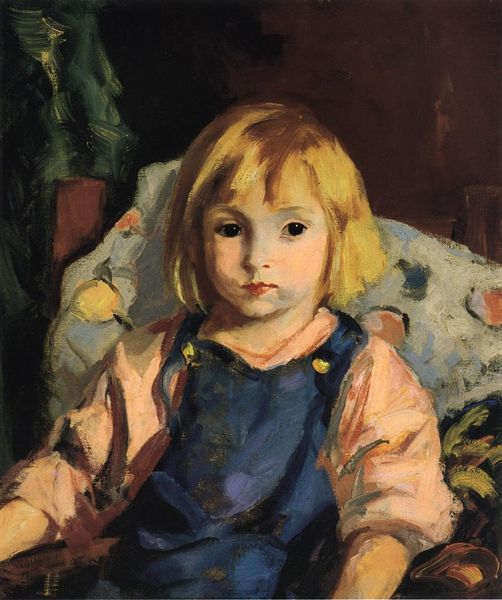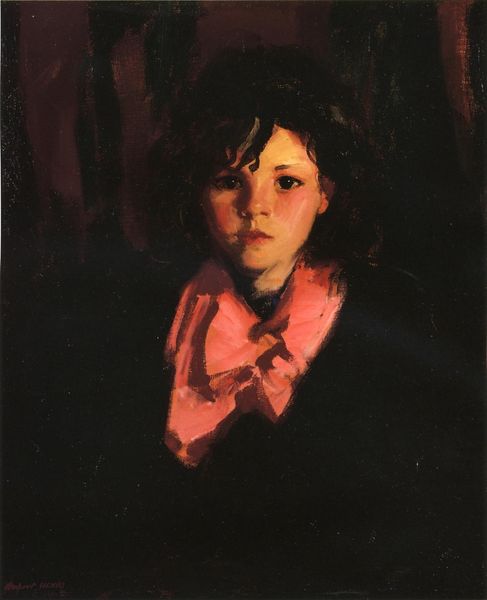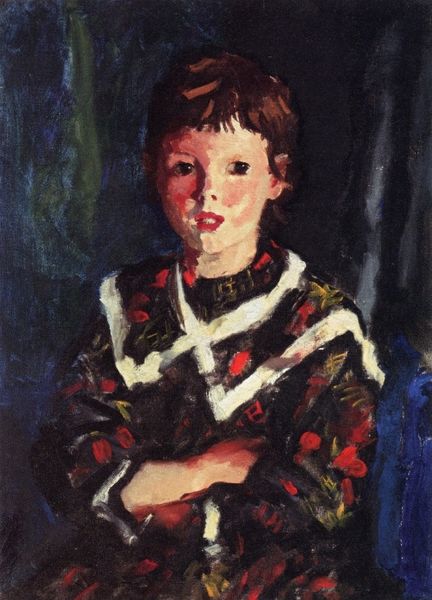
painting, oil-paint
#
portrait
#
painting
#
impressionism
#
oil-paint
#
oil painting
#
realism
Copyright: Public domain
Curator: This is Robert Henri's "Portrait of a Young Girl," rendered in oil paint, typical of his realist and impressionist styles. Editor: Immediately, the darkness of the palette strikes me. The girl almost emerges out of the shadows, a little haunting, yet captivating. I'm intrigued by her clothing— the stark floral patterns contrast with the darkness. Curator: Yes, the darkness feels quite deliberate. Henri was deeply influenced by the Ashcan School and sought to capture the vibrancy of everyday life, including its grittier aspects. The dark background pushes her forward, spotlighting her youthfulness, doesn't it? It speaks of resilience in subdued colors. Editor: Indeed. But look closer, I wonder about the materiality of her dress. The flowers, applied almost haphazardly, suggesting mass-produced fabric, perhaps from a garment factory. It reminds us of the often-overlooked labor behind even simple items like clothing. Is she from the working class? Curator: That's an insightful observation. Henri had a strong belief in democratic art accessible to all. Her dark dress adorned with what appear like simplistic flowers could represent the limited sartorial choices available to her class. This could be interpreted as the young lady finding individualism within strict conditions and the limits placed upon her. Editor: The brushstrokes, too—they're incredibly loose and visible. Not refined, perfectly blended strokes like you might find in academic portraiture. It adds to the immediacy and rawness. There’s no attempt to disguise the making of this image. Curator: The roughness complements her seemingly unwavering, even daring, stare. She's not idealized or overly beautified, but seen directly, as an individual with her own complexities and untold experiences. Editor: It seems like a move away from idealized depictions towards an interest in social realities and class markers— what ordinary folk dressed like at the turn of the century. Curator: Absolutely. Her portrait captures more than likeness; it is a snapshot of her social and psychological world as she comes into her own self, painted at the moment she considers her status in the world. Editor: Ultimately, it provokes questions about representation, labor, and the unspoken stories woven into the fabric of everyday life, painted with beautiful, yet accessible means. Curator: Precisely, making the artwork continue to touch audiences long after the brushstrokes have dried.
Comments
No comments
Be the first to comment and join the conversation on the ultimate creative platform.
